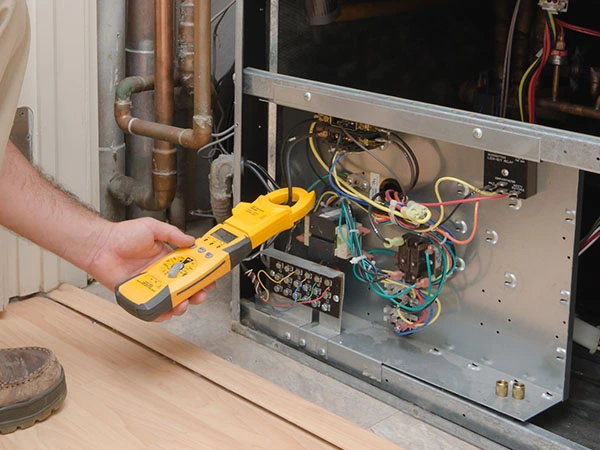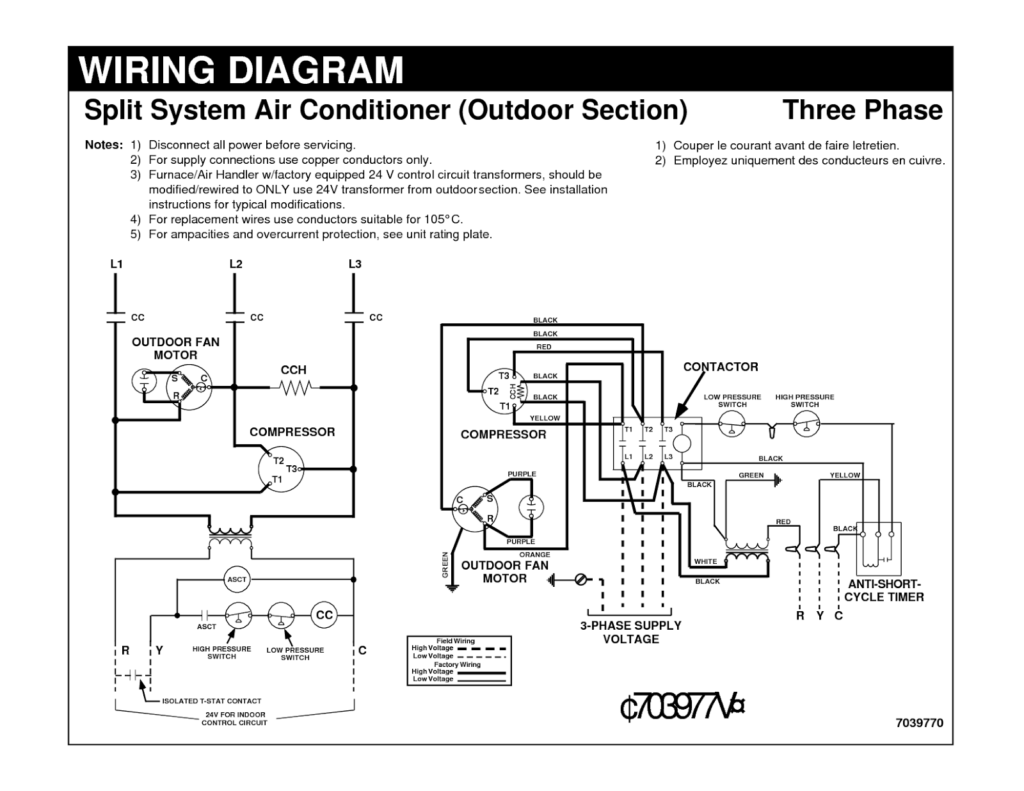Everything You Need to Know About HVAC Thermostat Wiring Diagrams
Understanding thermostat wiring diagrams is crucial for anyone looking to install or replace a thermostat. Proper HVAC wiring ensures your heating and cooling system operates efficiently. This guide will provide a detailed look at thermostat wiring, color codes, diagrams, and best practices. Read on to learn everything you need to know!
A thermostat is a key component that controls your home’s HVAC wiring (heating, ventilation, and air conditioning) system. It allows you to set desired temperatures and program heating and cooling schedules. The thermostat connects to your HVAC wiring components like your furnace, heat pump, or air handler through a series of wires. Each wire serves a specific function. By interpreting a thermostat wiring diagram correctly, you can ensure successful installation or troubleshoot any issues.
This guide will cover the basics of thermostat wiring, explain color coding, provide sample diagrams, and share tips for a smooth installation. With this information, you’ll understand exactly how to connect thermostat wires properly. Let’s get started!
If at ANY point during this article you need help, check out our Appliance Service page!
Have A Project In Mind?
Let's Text About Your ProjectWhat Are the Basic Components and Electrical Wiring in an HVAC System?
Before diving into wiring diagrams, it helps to understand the key components and electrical wiring that make up an HVAC wiring system. Here are the main elements:
Thermostat: Connects to the HVAC wiring components and allows temperature control.
Furnace: Provides heat by burning gas or heating electric coils.
Heat Pump: Extracts heat from outdoor air and moves it indoors in winter. Reverses in summer to cool your home.
Air Conditioner: Cools your home by removing heat from indoor air and releasing it outdoors.
Questions About Our Services?
Let's Connect And DiscussAir Handler: Blows air through your home’s ductwork to distribute heated or cooled air.
Condenser: The outdoor unit in a central air conditioning system that expels heat from your home.
24-volt transformer: Reduces household 120-volt current to 24 volts to power the thermostat and HVAC components.
Wires: Carry signals between the thermostat and your HVAC wiring equipment to control operation.
Now let’s look at thermostat wiring diagrams to understand how these parts connect.
What Is the Color Code on Thermostat Wires?
Thermostat wires are color coded to make it easier to connect them correctly. Here are the common wire color codes and their functions:
Red: R terminal – Provides 24V power to the thermostat. Also used for the second power wire from a dual transformer system.
White: W terminal – Brings power to the heat relay. Controls electric heat strips or a gas valve in furnaces.
Green: G terminal – Connects to the fan in the air handler to control blower operation.
Yellow: Y terminal – Powers the compressor in an air conditioner or heat pump outdoor unit.
Orange: O terminal – Controls reversing valve operation in a heat pump.
Get In Touch!
Text Us For A QuoteBlue: C terminal – Provides a common 24V connection between the thermostat and HVAC components.
Black: Sometimes used instead of blue for the C common wire.
Brown: B terminal – Controls operation of secondary heat source like electric coils in a heat pump.
Now let’s look at some sample thermostat wiring diagrams to see how these wire colors are used. (Resource: The Family Handyman)

Thermostat Wiring Diagram for a Heat Pump
Heat pumps are more complex than furnaces and use additional wires. Here is a typical thermostat wiring diagram for a heat pump:
- R – Red
- Y – Yellow
- G – Green
- O – Orange
- B – Brown
- C – Blue
The red R wire brings power to the thermostat. The yellow Y wire runs the outdoor compressor. The green G wirecontrols the indoor air handler fan. The orange O wire operates the heat pump’s reversing valve to switch between heating and cooling modes. The brown B wire controls auxiliary electric heat strips. Finally, the blue C wire provides a common ground connection.
Thermostat Wiring Diagram for an Air Conditioner
A central air conditioning system needs fewer wires than a heat pump. A basic thermostat wiring diagram for an air conditioner includes:
- R – Red
- Y – Yellow
- G – Green
- C – Blue
Again, the red R wire powers the thermostat and the yellow Y wire runs the outdoor condenser unit. The green G wirecontrols the indoor air handler fan. The blue C wire provides common ground. That’s all that’s needed to control air conditioning!
What Does Each Terminal on the Thermostat Mean?
Now let’s review the function of each terminal that may appear on your thermostat. Refer to your owner’s manual for terminals specific to your model.
- R: 24V power from transformer
- Rc: Cooling power from secondary transformer (dual systems)
- Rh: Heating power from secondary transformer (dual systems)
- W: Controls heat relay for furnace
- Y: Compressor operation
- G: Indoor air handler fan
- C: Provides common ground
- O/B: Reversing valve control
- E: Controls electric auxiliary heat
- H: Humidifier or dehumidifier
- D: Damper control
Being familiar with these terminals will help you accurately match up wires as you install a new thermostat.
Questions About A Project?
Let's Connect!What Are the Most Common Thermostat Wiring Configurations?
While wiring diagrams vary based on HVAC equipment, there are a few standard configurations:
2-Wire: Basic heating and cooling system. Power (R) and heat control (W).
3-Wire: Heat and cool system. Power (R), heat (W), and compressor (Y).
4-Wire: Basic heat pump. Power (R), compressor (Y), fan (G), reversing valve (O/B).
5-Wire: Heat pump with emergency heat. Adds auxiliary heat control (E).
6-Wire: Dual fuel system. Adds separate R terminals for heating and cooling transformers.
7-Wire: Fully equipped system with humidifier control (H).
8-Wire: Dual transformer heat pump. Provides two power wires (R & Rc) plus all functions.
These standard configurations cover most typical residential HVAC wiring systems.
Additional Equipment May Require More Wires
Some homes have more advanced HVAC wiring systems that require additional wire connections. Here are some examples:
Dampers to control airflow use a D wire.
Dehumidifier hookup needs a DH wire.
Whole-home humidifiers use an H wire.
Zone systems to control multiple areas need M wires.
Heat pumps with dual fuel backup use an E wire for auxiliary heat.
If your system includes components like these, the wiring diagram will be more complex. Refer to the manufacturer’s documentation for your specific equipment. (Resource: Cielo)

Tips for Installing or Replacing a Thermostat
When installing or replacing a thermostat, follow these tips for safe and seamless wiring:
Turn off power to the HVAC wiring system at the breaker. Verify it’s off!
Take a photo of the old thermostat wiring before removing wires. This provides a handy reference.
Label wires with painter’s tape as you remove them to avoid confusion.
Refer to the manufacturer instructions for your new thermostat. Wiring diagrams should be included.
Double check your connections against the diagram before restoring power.
Have an electrician handle complex systems with multiple transformers.
Take your time and use the diagram specific to your HVAC equipment. With the right preparations, you can install a new smart thermostat in no time!
Testing the New Thermostat Wiring
Once you’ve installed the new thermostat and restored power, test operation carefully before completing the installation:
Turn on the heating system and verify heat turns on and off properly.
Switch to cooling mode and test the air conditioning. Confirm proper cycling.
Make sure the thermostat fan setting correctly controls the blower fan.
Test any smart features like wifi connectivity to ensure proper communication.
Taking the time to methodically test all functions will ensure your new thermostat works as expected before you button up the installation.
What to Do if the New Thermostat Doesn’t Work Correctly
If your heating or cooling doesn’t operate properly after installing a new thermostat, don’t panic. Follow these troubleshooting tips:
Double check all wiring connections against the diagram to make sure no wires are swapped.
Try resetting the thermostat to factory defaults in case the settings are incorrectly configured.
Lower the temperature setting significantly below room temperature to test the heating. Raise it above room temp to test cooling.
Use a multimeter to test for 24V between the R and C terminals when calling for heat or cool. If not present, there is a wiring issue.
Inspect the circuit breaker to make sure it’s clearly on. Also check fuses in the HVAC equipment.
Try swapping the old thermostat back in to isolate the issue.
With some patience and targeted troubleshooting, you can get your new thermostat working properly. But if needed, don’t hesitate to call in an HVAC wiring technician for assistance.
Hiring an HVAC Wiring Technician for Complex Wiring
Some HVAC systems have intricate wiring that is best handled by professionals. Consider hiring an HVAC technician for:
Dual transformer systems requiring multiple power wires
Heat pumps with dual fuel backup heat
Zoned systems with motorized dampers
Whole home humidification with additional controls
Add-on accessories like dehumidifiers that need wiring
Troubleshooting confusing wiring problems
Though wiring a basic system is doable yourself, complex configurations often warrant hiring a technician. Their expertise can save you time and ensure correct operation.

Summary: Key Takeaways on Thermostat Wiring
Understanding thermostat wiring can seem daunting at first. Here are the main tips to remember:
Wire colors like red, white, green, yellow, and blue correspond to specific terminals and functions.
Refer to the wiring diagram for your specific HVAC equipment for proper connections. Don’t just rely on generalized diagrams.
Label all wires to avoid confusion when removing an old thermostat.
C wires provide necessary power to smart digital thermostats in most cases.
Match your new thermostat terminals to the wiring diagram to ensure correct operation.
Test all functions after wiring a new thermostat before completing installation.
And when in doubt, don’t hesitate to call an HVAC technician for assistance! Taking the time to properly interpret thermostat wiring diagrams will ensure your heating and cooling system works at peak efficiency. With this guide, you should understand the basics of wiring new thermostats. Stay comfortable!
Frequently Asked Questions About Thermostat HVAC Wiring
What is a C wire and do I need one?
The C or common wire provides 24V power to the thermostat. Many smart thermostats require a C wire for power. If you don’t have one, an electrician may need to run new wiring from the furnace to the thermostat.
What if I only have two wires at the thermostat?
If you only have two wires, you likely have a very basic mechanical heating and cooling system. You’ll need to upgrade the wiring to support more advanced thermostats.
How can I tell what wires control heating and cooling?
Typically, the red R wire controls cooling power while the white W wire controls heating. Refer to the wiring diagram for your HVAC system or call the manufacturer.
What if I’m replacing an old mercury thermostat?
Mercury thermostats often use different color wires. You’ll need to trace each wire back to the equipment to determine its function. Label each wire as you go!
My new thermostat doesn’t have separate R and Rh terminals. What should I do?
If your old thermostat had separate Rh and Rc terminals but your new one doesn’t, simply connect both red wires to the R terminal.
What if my wiring doesn’t seem to match common configurations?
Some systems, especially those with zone control, can have atypical wiring. Always refer to the manufacturer’s diagram for your specific equipment if you encounter non-standard wiring. Call a pro for help if needed.
